Halal Food Market Size 2025-2029
The halal food market size is valued to increase USD 355 billion, at a CAGR of 3.6% from 2024 to 2029. Increasing consumer expenditure on halal food will drive the halal food market.
Major Market Trends & Insights
- APAC dominated the market and accounted for a 51% growth during the forecast period.
- By Product - Halal MPS segment was valued at USD 414.60 billion in 2023
- By Distribution Channel - Offline segment accounted for the largest market revenue share in 2023
Market Size & Forecast
- Market Opportunities: USD 38.88 billion
- Market Future Opportunities: USD 355.00 billion
- CAGR from 2024 to 2029 : 3.6%
Market Summary
- The market, valued at USD 1.1 trillion in 2020, represents a significant and growing segment within the global food industry. Driven by the increasing global Muslim population and rising consumer awareness and preference for halal food, this market is poised for continued expansion. Organized retail, including supermarkets and hypermarkets, is a key growth area for the market. These channels offer convenience, variety, and reliability, addressing consumers' demand for authentic and certified halal food products. However, the market also faces challenges, such as the proliferation of fake halal food and food scams, which undermine trust and threaten the industry's reputation.
- To meet the growing demand for halal food and combat the issue of counterfeit products, market players are investing in certification and traceability systems. These initiatives not only help ensure the authenticity and quality of halal food products but also provide consumers with peace of mind and confidence in their purchases. The market's future direction lies in innovation, sustainability, and digitalization. Companies are exploring new product categories, such as plant-based and organic halal food, to cater to evolving consumer preferences. Additionally, the adoption of technology, such as blockchain and Artificial Intelligence (AI), is enabling greater transparency and traceability throughout the supply chain, ensuring the integrity and safety of halal food products.
- In conclusion, the market's growth is underpinned by demographic trends, consumer preferences, and the evolving retail landscape. While challenges, such as the prevalence of fake halal food, require attention, the market's future looks promising, with opportunities for innovation, sustainability, and digitalization.
What will be the Size of the Halal Food Market during the forecast period?
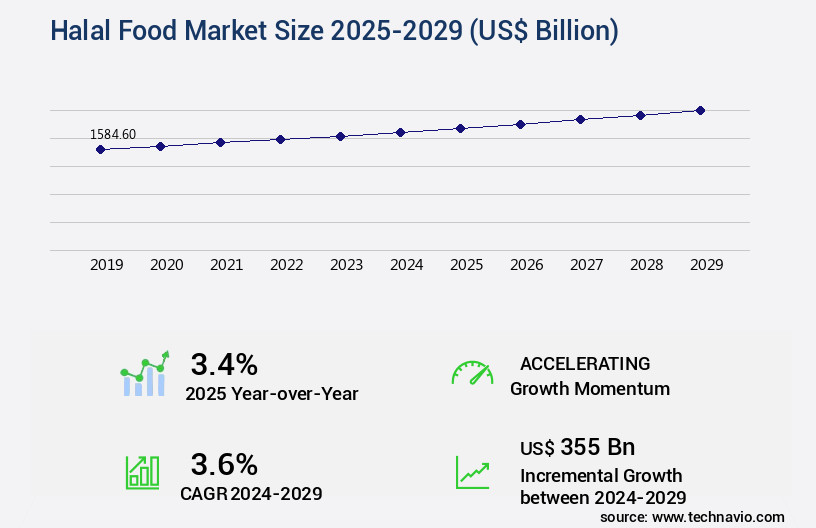
Get Key Insights on Market Forecast (PDF) Request Free Sample
How is the Halal Food Market Segmented ?
The halal food industry research report provides comprehensive data (region-wise segment analysis), with forecasts and estimates in "USD billion" for the period 2025-2029, as well as historical data from 2019-2023 for the following segments.
- Product
- Halal MPS
- Halal BCC
- Halal FVN
- Halal beverages
- Others
- Distribution Channel
- Type
- Geography
- Middle East and Africa
- APAC
- Australia
- China
- India
- Japan
- South Korea
- Rest of World (ROW)
By Product Insights
The halal MPS segment is estimated to witness significant growth during the forecast period.
The market, a significant and continually evolving sector, encompasses a range of products derived from halal-certified sources, primarily including beef, lamb, goat, chicken, Turkey, and fish. This market is divided into three main categories: fresh halal meat, poultry, and seafood (Minimal Processed Shelf-Stable, or MPS); minimally processed halal MPS, which excludes artificial additives or colorings and preserves the product's natural characteristics; and heavily processed halal MPS, which includes halal sausages, salami, corned beef, minute steak, Canned Meat, poultry, and seafood, and frozen meat, poultry, and seafood. Strict adherence to Islamic dietary guidelines is ensured through rigorous ingredient authenticity testing, slaughterhouse hygiene protocols, and supply chain traceability.
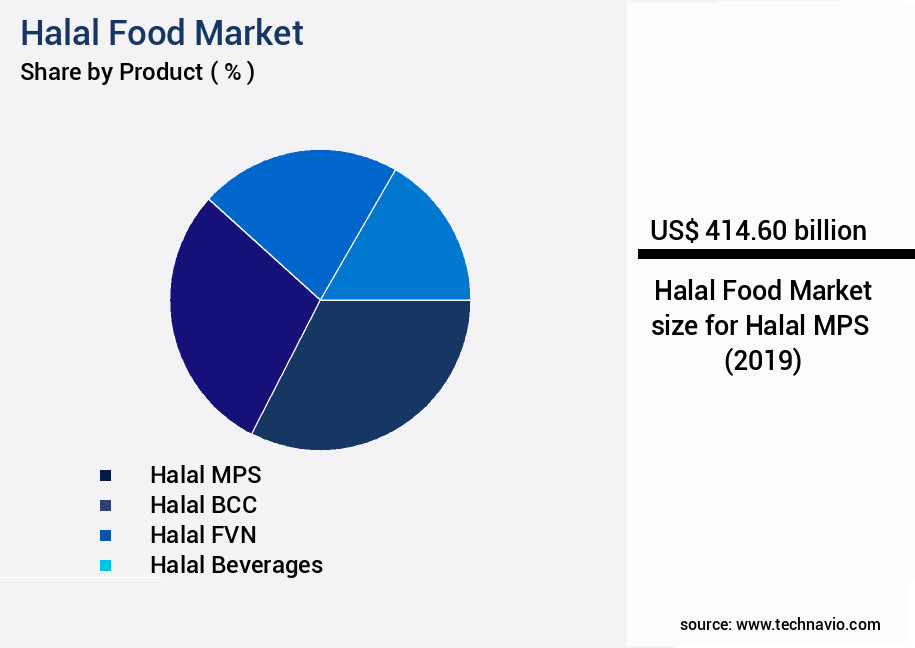
Request Free Sample
The Halal MPS segment was valued at USD 414.60 billion in 2019 and showed a gradual increase during the forecast period.
Religious compliance audits, process control systems, and microbial contamination control measures are implemented to maintain consumer confidence. The market prioritizes cleanliness and sanitation, adhering to international halal standards and food safety regulations. Product labeling regulations, packaging material compliance, and consumer protection measures are also crucial. Animal welfare standards, quality control procedures, and product lifecycle management are essential aspects of the halal food industry, with Waste Management strategies and ethical meat production further enhancing its sustainability. Approximately 20% of the world's population adheres to Islamic dietary laws, making the market a substantial and growing global industry.
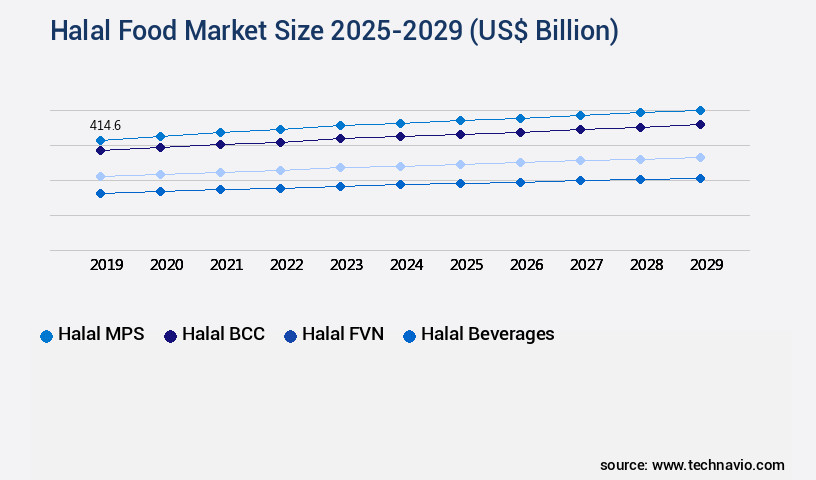
Request Free Sample
Regional Analysis
APAC is estimated to contribute 51% to the growth of the global market during the forecast period. Technavio's analysts have elaborately explained the regional trends and drivers that shape the market during the forecast period.
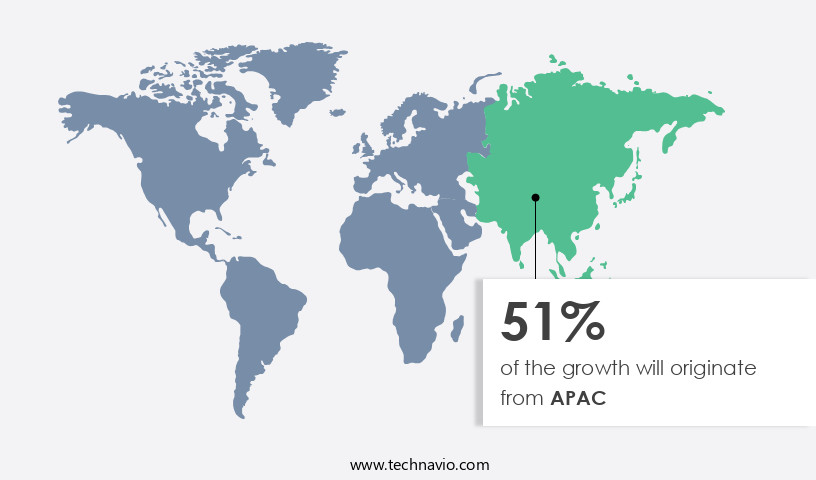
See How Halal Food Market Demand is Rising in APAC Request Free Sample
The market in APAC is experiencing significant growth, with major consumer bases in the Philippines, Indonesia, Pakistan, Bangladesh, Malaysia, and Singapore. Key companies such as Al Islami Foods, Kawan Food, QL Foods, and Ramly Food are leading the industry in this region. The increasing consumer expenditure on halal food is a significant driving factor for this market's expansion. Major corporations, including Nestle and Unilever, have responded by launching dedicated halal food production facilities in the area.
Nestle, for instance, offers a comprehensive range of halal food products from its manufacturing facility in Australia. This commitment to meeting consumer demand bolsters confidence in the market and encourages further investment.
Market Dynamics
Our researchers analyzed the data with 2024 as the base year, along with the key drivers, trends, and challenges. A holistic analysis of drivers will help companies refine their marketing strategies to gain a competitive advantage.
The market is a significant and growing sector, driven by the increasing demand for ethically and religiously compliant food options. With a population of over 1.8 billion Muslims worldwide, the need for implementing halal certification processes is essential to maintaining supply chain integrity and ensuring ethical meat processing methods. This market goes beyond religious requirements, as consumers seek transparency and authenticity in their food sources. Verifying ingredient authenticity and origin is a critical aspect of the halal food industry. Adhering to food safety and hygiene standards and developing sustainable halal food production methods are also crucial to strengthening consumer confidence in halal products.
In fact, a recent study revealed that over 60% of consumers are willing to pay a premium for halal-certified food, highlighting the importance of effective halal food quality control. To meet the increasing demand, companies are investing in improving halal food traceability systems and utilizing advanced food preservation technologies. Compliance with international halal regulations is mandatory for businesses looking to enter this market, making managing halal food logistics and distribution a complex yet essential task. Moreover, the industry is focusing on promoting ethical and sustainable halal practices, as consumers become more conscious of their food choices.
Building transparent and reliable halal supply chains is a priority, with many businesses leveraging technology for halal food safety and enhancing consumer understanding of halal standards. Creating effective halal certification schemes and monitoring halal food product lifecycle management are essential for maintaining market competitiveness. In comparison, the number of halal-certified food products in the European market has grown by over 30% in the last five years, reflecting the increasing importance of this sector. In conclusion, the market is a dynamic and growing industry, driven by the need for ethical, religiously compliant, and sustainable food options.
Companies that can effectively manage halal food quality control, maintain transparency, and comply with international regulations will be well-positioned to succeed in this market.
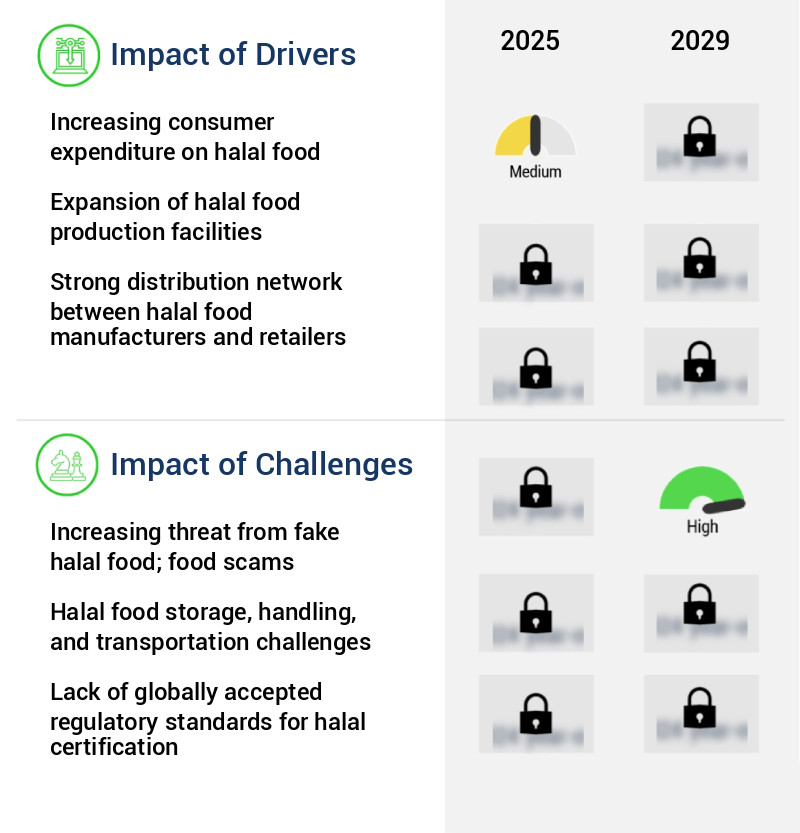
What are the key market drivers leading to the rise in the adoption of Halal Food Industry?
- The significant growth in consumer spending on halal food products serves as the primary market catalyst.
- The market has experienced substantial expansion beyond traditional regions like Indonesia, Malaysia, Saudi Arabia, and the UAE. Notable growth has occurred in countries such as the US, Germany, Australia, and India. This shift is primarily driven by heightened consumer awareness and interest in halal food. Australia, as a significant global food exporter, anticipates increased halal food exports during the forecast period.
- Additionally, Indonesia, Malaysia, Turkey, and Singapore have seen a rise in consumer spending on halal food over the past decade. This trend signifies the evolving nature of the market and its expanding reach across various sectors.
What are the market trends shaping the Halal Food Industry?
- The organized retail sector is experiencing significant growth, emerging as the latest market trend.
- Halal foods have gained significant traction in the global market, with organized retailing playing a pivotal role in their distribution. Hypermarkets and supermarkets, as major offline distribution channels, provide consumers with a wide selection of halal food products. Tesco Plc, Target Brands Inc., and ALDI Inc. Are some notable retailers catering to this segment. The expansion of private-label halal food offerings by these retailers is a significant market trend.
- The proliferation of organized retailers in various sectors, including food and beverage, is fueling the growth of the market. This shift towards organized retailing offers consumers convenience and a broader range of options, contributing to the market's continuous evolution.
What challenges does the Halal Food Industry face during its growth?
- The rise of fake halal food scams poses a significant challenge to the industry's growth, requiring heightened vigilance and commitment to authenticity and transparency to maintain consumer trust.
- The market experiences ongoing challenges with the proliferation of counterfeit halal products. Instances of food fraud, such as Master Halal Meat Ltd.'s lamb mince being found adulterated with beef in the UK, or a meat supplier displaying unauthorized halal trademarks, highlight the complexity of regulating the market. These incidents underscore the importance of maintaining the authenticity and integrity of halal food production and distribution. Despite these challenges, the market continues to expand and diversify, with various sectors adopting halal practices.
- For instance, the cosmetics industry has seen a surge in demand for halal-certified products. The market's evolution is driven by increasing consumer awareness and a growing global population adhering to the Islamic faith. The ongoing efforts to ensure transparency and authenticity in the production and distribution of halal products are crucial for maintaining consumer trust and confidence.
Exclusive Technavio Analysis on Customer Landscape
The halal food market forecasting report includes the adoption lifecycle of the market, covering from the innovator's stage to the laggard's stage. It focuses on adoption rates in different regions based on penetration. Furthermore, the halal food market report also includes key purchase criteria and drivers of price sensitivity to help companies evaluate and develop their market growth analysis strategies.
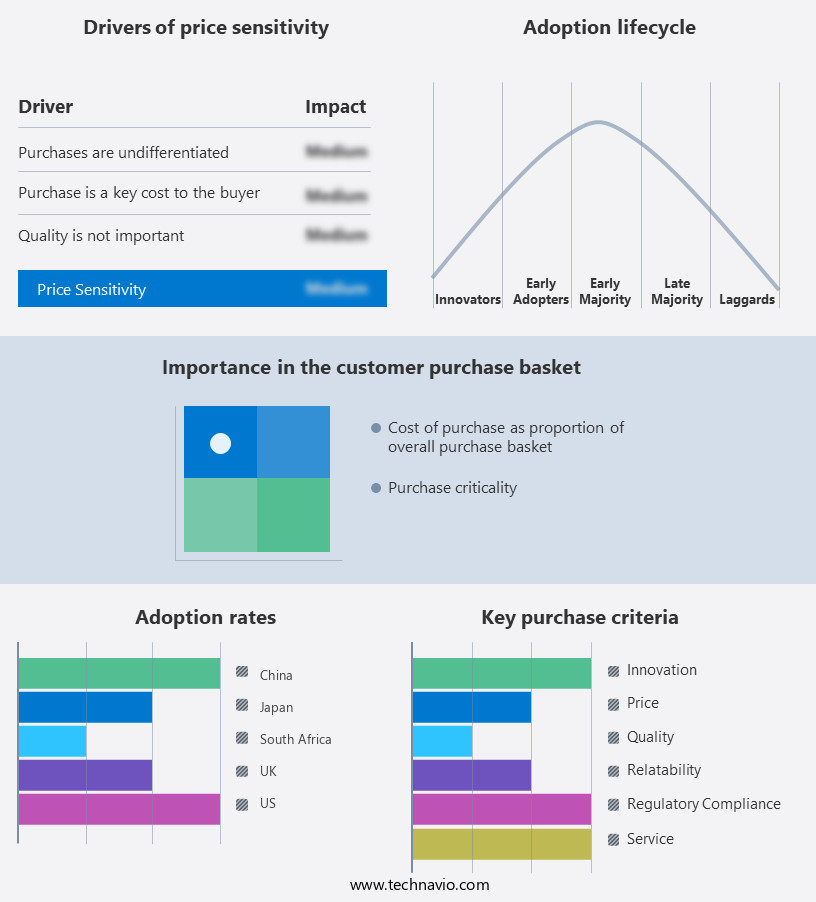
Customer Landscape of Halal Food Industry
Competitive Landscape
Companies are implementing various strategies, such as strategic alliances, halal food market forecast, partnerships, mergers and acquisitions, geographical expansion, and product/service launches, to enhance their presence in the industry.
Al Islami Foods - This company specializes in providing a diverse range of halal food options, including whole chickens, chicken parts, burgers, nuggets, franks, seafood, vegetables, French fries, fruit, and frozen meals for children.
The industry research and growth report includes detailed analyses of the competitive landscape of the market and information about key companies, including:
- Al Islami Foods
- Cargill Inc.
- CJ CheilJedang Corp.
- Daesang Corp.
- Flying Trade Group Plc
- Glanbia plc
- Johnsonville LLC
- Kawan Food Berhad
- Midamar Corp.
- Nema Food Inc.
- Nestle SA
- Prairie Halal Foods
- QL Foods Sdn Bhd
- Raj Foods Ltd.
- Ramly Food Processing
- Sadia
- Tahira Foods Ltd.
- Tesco Plc
- The American Halal Co. Inc.
- Unilever PLC
Qualitative and quantitative analysis of companies has been conducted to help clients understand the wider business environment as well as the strengths and weaknesses of key industry players. Data is qualitatively analyzed to categorize companies as pure play, category-focused, industry-focused, and diversified; it is quantitatively analyzed to categorize companies as dominant, leading, strong, tentative, and weak.
Recent Development and News in Halal Food Market
- In January 2024, food industry giant Nestlé announced the launch of its new halal-certified product line, "Nestlé Halal," in Malaysia. This expansion was a strategic response to the growing demand for halal food in the Southeast Asian market (Nestlé Press Release, 2024).
- In March 2024, Arla Foods, a leading dairy company, entered into a partnership with the Malaysian Halal Development Corporation to produce and distribute halal dairy products in Malaysia and the Middle East (Arla Foods Press Release, 2024).
- In May 2024, the United States Department of Agriculture (USDA) granted halal certification to its Agricultural Marketing Service, allowing it to offer certification services for halal meat and poultry products (USDA Press Release, 2024).
- In April 2025, Abengoa, a Spanish industrial company, completed the acquisition of a 50% stake in Halal Food Industries, a leading halal food manufacturer in Egypt, for € 50 million (Abengoa Press Release, 2025). This strategic move aimed to strengthen Abengoa's presence in the growing Middle Eastern and African market.
Dive into Technavio's robust research methodology, blending expert interviews, extensive data synthesis, and validated models for unparalleled Halal Food Market insights. See full methodology.
|
Market Scope
|
|
Report Coverage
|
Details
|
|
Page number
|
222
|
|
Base year
|
2024
|
|
Historic period
|
2019-2023 |
|
Forecast period
|
2025-2029
|
|
Growth momentum & CAGR
|
Accelerate at a CAGR of 3.6%
|
|
Market growth 2025-2029
|
USD 355 billion
|
|
Market structure
|
Fragmented
|
|
YoY growth 2024-2025(%)
|
3.4
|
|
Key countries
|
China, Japan, India, Saudi Arabia, UAE, South Korea, South Africa, Egypt, Australia, and Nigeria
|
|
Competitive landscape
|
Leading Companies, Market Positioning of Companies, Competitive Strategies, and Industry Risks
|
Request Free Sample
Research Analyst Overview
- Amidst the dynamic global food landscape, the market continues to evolve, driven by a growing consumer base and a heightened focus on authenticity and compliance. This market, valued at an estimated USD 1.1 trillion in 2021, represents a significant portion of the global food industry. Ingredient authenticity testing and Sharia-compliant sourcing are crucial aspects of the market. Slaughterhouse hygiene protocols and process control systems ensure religious compliance, while cleanliness and sanitation practices safeguard food safety. Nutritional labeling requirements facilitate dietary restrictions compliance, enabling consumers to make informed choices. Supply chain traceability and production facility audits are essential for maintaining consumer confidence, as is adherence to international halal standards and food safety regulations.
- Animal welfare standards and sustainable food practices further enhance the market's appeal. Halal certification standards, religious compliance audits, and microbial contamination control are integral components of the halal food industry. Zabiha meat processing, a traditional method of Islamic slaughter, is gaining popularity due to its emphasis on animal welfare and ethical production. Logistical challenges, such as food preservation techniques and packaging material compliance, are addressed through advanced food processing technologies and innovative packaging solutions. Product labeling regulations and consumer protection measures ensure transparency and trust. The market's continuous growth is underpinned by a commitment to quality control procedures, product lifecycle management, and waste management strategies.
- As the market expands, it remains essential to adhere to Islamic dietary guidelines and international standards, fostering a thriving and sustainable industry.
What are the Key Data Covered in this Halal Food Market Research and Growth Report?
-
What is the expected growth of the Halal Food Market between 2025 and 2029?
-
What segmentation does the market report cover?
-
The report is segmented by Product (Halal MPS, Halal BCC, Halal FVN, Halal beverages, and Others), Distribution Channel (Offline and Online), Type (Organic and Inorganic), and Geography (APAC, Middle East and Africa, Europe, South America, and North America)
-
Which regions are analyzed in the report?
-
APAC, Middle East and Africa, Europe, South America, and North America
-
What are the key growth drivers and market challenges?
-
Who are the major players in the Halal Food Market?
-
Al Islami Foods, Cargill Inc., CJ CheilJedang Corp., Daesang Corp., Flying Trade Group Plc, Glanbia plc, Johnsonville LLC, Kawan Food Berhad, Midamar Corp., Nema Food Inc., Nestle SA, Prairie Halal Foods, QL Foods Sdn Bhd, Raj Foods Ltd., Ramly Food Processing, Sadia, Tahira Foods Ltd., Tesco Plc, The American Halal Co. Inc., and Unilever PLC
Market Research Insights
- The market adheres to religious compliance schemes based on Islamic dietary principles, ensuring quality assurance measures through various methods. For instance, Zabiha method compliance involves ethical slaughter practices, while ingredient origin tracing and sustainable sourcing practices promote transparency and consumer trust. Food safety audits, packaging integrity testing, and distribution network integrity are essential components of the production process control. In terms of market size, the global Halal food industry is projected to reach USD 2.1 trillion by 2025, growing at a steady rate. This growth is driven by the increasing global Muslim population and the expanding awareness of Halal food among non-Muslim consumers.
- In contrast, the market's annual growth rate is estimated to be around 10%, significantly higher than the global food industry's average growth rate of 3-4%. These figures underscore the importance of the market's continuous evolution and the need for effective regulatory frameworks, consumer education programs, and product traceability systems.
We can help! Our analysts can customize this halal food market research report to meet your requirements.
Get in touch
1 Executive Summary
- 1.1 Market overview
- Executive Summary - Chart on Market Overview
- Executive Summary - Data Table on Market Overview
- Executive Summary - Chart on Global Market Characteristics
- Executive Summary - Chart on Market by Geography
- Executive Summary - Chart on Market Segmentation by Product
- Executive Summary - Chart on Market Segmentation by Distribution Channel
- Executive Summary - Chart on Market Segmentation by Type
- Executive Summary - Chart on Incremental Growth
- Executive Summary - Data Table on Incremental Growth
- Executive Summary - Chart on Company Market Positioning
2 Technavio Analysis
- 2.1 Analysis of price sensitivity, lifecycle, customer purchase basket, adoption rates, and purchase criteria
- Analysis of price sensitivity, lifecycle, customer purchase basket, adoption rates, and purchase criteria
- 2.2 Criticality of inputs and Factors of differentiation
- Overview on criticality of inputs and factors of differentiation
- 2.3 Factors of disruption
- Overview on factors of disruption
- 2.4 Impact of drivers and challenges
- Impact of drivers and challenges in 2024 and 2029
3 Market Landscape
- 3.1 Market ecosystem
- Parent Market
- Data Table on - Parent Market
- 3.2 Market characteristics
- Market characteristics analysis
4 Market Sizing
- 4.1 Market definition
- Offerings of companies included in the market definition
- 4.2 Market segment analysis
- 4.4 Market outlook: Forecast for 2024-2029
- Chart on Global - Market size and forecast 2024-2029 ($ billion)
- Data Table on Global - Market size and forecast 2024-2029 ($ billion)
- Chart on Global Market: Year-over-year growth 2024-2029 (%)
- Data Table on Global Market: Year-over-year growth 2024-2029 (%)
5 Historic Market Size
- 5.1 Global Halal Food Market 2019 - 2023
- Historic Market Size - Data Table on Global Halal Food Market 2019 - 2023 ($ billion)
- 5.2 Product segment analysis 2019 - 2023
- Historic Market Size - Product Segment 2019 - 2023 ($ billion)
- 5.3 Distribution Channel segment analysis 2019 - 2023
- Historic Market Size - Distribution Channel Segment 2019 - 2023 ($ billion)
- 5.4 Type segment analysis 2019 - 2023
- Historic Market Size - Type Segment 2019 - 2023 ($ billion)
- 5.5 Geography segment analysis 2019 - 2023
- Historic Market Size - Geography Segment 2019 - 2023 ($ billion)
- 5.6 Country segment analysis 2019 - 2023
- Historic Market Size - Country Segment 2019 - 2023 ($ billion)
6 Qualitative Analysis
- 6.1 Impact of AI on Global Halal Food Market
7 Five Forces Analysis
- 7.1 Five forces summary
- Five forces analysis - Comparison between 2024 and 2029
- 7.2 Bargaining power of buyers
- Bargaining power of buyers - Impact of key factors 2024 and 2029
- 7.3 Bargaining power of suppliers
- Bargaining power of suppliers - Impact of key factors in 2024 and 2029
- 7.4 Threat of new entrants
- Threat of new entrants - Impact of key factors in 2024 and 2029
- 7.5 Threat of substitutes
- Threat of substitutes - Impact of key factors in 2024 and 2029
- 7.6 Threat of rivalry
- Threat of rivalry - Impact of key factors in 2024 and 2029
- 7.7 Market condition
- Chart on Market condition - Five forces 2024 and 2029
8 Market Segmentation by Product
- 8.1 Market segments
- Chart on Product - Market share 2024-2029 (%)
- Data Table on Product - Market share 2024-2029 (%)
- 8.2 Comparison by Product
- Chart on Comparison by Product
- Data Table on Comparison by Product
- 8.3 Halal MPS - Market size and forecast 2024-2029
- Chart on Halal MPS - Market size and forecast 2024-2029 ($ billion)
- Data Table on Halal MPS - Market size and forecast 2024-2029 ($ billion)
- Chart on Halal MPS - Year-over-year growth 2024-2029 (%)
- Data Table on Halal MPS - Year-over-year growth 2024-2029 (%)
- 8.4 Halal BCC - Market size and forecast 2024-2029
- Chart on Halal BCC - Market size and forecast 2024-2029 ($ billion)
- Data Table on Halal BCC - Market size and forecast 2024-2029 ($ billion)
- Chart on Halal BCC - Year-over-year growth 2024-2029 (%)
- Data Table on Halal BCC - Year-over-year growth 2024-2029 (%)
- 8.5 Halal FVN - Market size and forecast 2024-2029
- Chart on Halal FVN - Market size and forecast 2024-2029 ($ billion)
- Data Table on Halal FVN - Market size and forecast 2024-2029 ($ billion)
- Chart on Halal FVN - Year-over-year growth 2024-2029 (%)
- Data Table on Halal FVN - Year-over-year growth 2024-2029 (%)
- 8.6 Halal beverages - Market size and forecast 2024-2029
- Chart on Halal beverages - Market size and forecast 2024-2029 ($ billion)
- Data Table on Halal beverages - Market size and forecast 2024-2029 ($ billion)
- Chart on Halal beverages - Year-over-year growth 2024-2029 (%)
- Data Table on Halal beverages - Year-over-year growth 2024-2029 (%)
- 8.7 Others - Market size and forecast 2024-2029
- Chart on Others - Market size and forecast 2024-2029 ($ billion)
- Data Table on Others - Market size and forecast 2024-2029 ($ billion)
- Chart on Others - Year-over-year growth 2024-2029 (%)
- Data Table on Others - Year-over-year growth 2024-2029 (%)
- 8.8 Market opportunity by Product
- Market opportunity by Product ($ billion)
- Data Table on Market opportunity by Product ($ billion)
9 Market Segmentation by Distribution Channel
- 9.1 Market segments
- Chart on Distribution Channel - Market share 2024-2029 (%)
- Data Table on Distribution Channel - Market share 2024-2029 (%)
- 9.2 Comparison by Distribution Channel
- Chart on Comparison by Distribution Channel
- Data Table on Comparison by Distribution Channel
- 9.3 Offline - Market size and forecast 2024-2029
- Chart on Offline - Market size and forecast 2024-2029 ($ billion)
- Data Table on Offline - Market size and forecast 2024-2029 ($ billion)
- Chart on Offline - Year-over-year growth 2024-2029 (%)
- Data Table on Offline - Year-over-year growth 2024-2029 (%)
- 9.4 Online - Market size and forecast 2024-2029
- Chart on Online - Market size and forecast 2024-2029 ($ billion)
- Data Table on Online - Market size and forecast 2024-2029 ($ billion)
- Chart on Online - Year-over-year growth 2024-2029 (%)
- Data Table on Online - Year-over-year growth 2024-2029 (%)
- 9.5 Market opportunity by Distribution Channel
- Market opportunity by Distribution Channel ($ billion)
- Data Table on Market opportunity by Distribution Channel ($ billion)
10 Market Segmentation by Type
- 10.1 Market segments
- Chart on Type - Market share 2024-2029 (%)
- Data Table on Type - Market share 2024-2029 (%)
- 10.2 Comparison by Type
- Chart on Comparison by Type
- Data Table on Comparison by Type
- 10.3 Organic - Market size and forecast 2024-2029
- Chart on Organic - Market size and forecast 2024-2029 ($ billion)
- Data Table on Organic - Market size and forecast 2024-2029 ($ billion)
- Chart on Organic - Year-over-year growth 2024-2029 (%)
- Data Table on Organic - Year-over-year growth 2024-2029 (%)
- 10.4 Inorganic - Market size and forecast 2024-2029
- Chart on Inorganic - Market size and forecast 2024-2029 ($ billion)
- Data Table on Inorganic - Market size and forecast 2024-2029 ($ billion)
- Chart on Inorganic - Year-over-year growth 2024-2029 (%)
- Data Table on Inorganic - Year-over-year growth 2024-2029 (%)
- 10.5 Market opportunity by Type
- Market opportunity by Type ($ billion)
- Data Table on Market opportunity by Type ($ billion)
11 Customer Landscape
- 11.1 Customer landscape overview
- Analysis of price sensitivity, lifecycle, customer purchase basket, adoption rates, and purchase criteria
12 Geographic Landscape
- 12.1 Geographic segmentation
- Chart on Market share by geography 2024-2029 (%)
- Data Table on Market share by geography 2024-2029 (%)
- 12.2 Geographic comparison
- Chart on Geographic comparison
- Data Table on Geographic comparison
- 12.3 APAC - Market size and forecast 2024-2029
- Chart on APAC - Market size and forecast 2024-2029 ($ billion)
- Data Table on APAC - Market size and forecast 2024-2029 ($ billion)
- Chart on APAC - Year-over-year growth 2024-2029 (%)
- Data Table on APAC - Year-over-year growth 2024-2029 (%)
- 12.4 Middle East and Africa - Market size and forecast 2024-2029
- Chart on Middle East and Africa - Market size and forecast 2024-2029 ($ billion)
- Data Table on Middle East and Africa - Market size and forecast 2024-2029 ($ billion)
- Chart on Middle East and Africa - Year-over-year growth 2024-2029 (%)
- Data Table on Middle East and Africa - Year-over-year growth 2024-2029 (%)
- 12.5 Europe - Market size and forecast 2024-2029
- Chart on Europe - Market size and forecast 2024-2029 ($ billion)
- Data Table on Europe - Market size and forecast 2024-2029 ($ billion)
- Chart on Europe - Year-over-year growth 2024-2029 (%)
- Data Table on Europe - Year-over-year growth 2024-2029 (%)
- 12.6 South America - Market size and forecast 2024-2029
- Chart on South America - Market size and forecast 2024-2029 ($ billion)
- Data Table on South America - Market size and forecast 2024-2029 ($ billion)
- Chart on South America - Year-over-year growth 2024-2029 (%)
- Data Table on South America - Year-over-year growth 2024-2029 (%)
- 12.7 North America - Market size and forecast 2024-2029
- Chart on North America - Market size and forecast 2024-2029 ($ billion)
- Data Table on North America - Market size and forecast 2024-2029 ($ billion)
- Chart on North America - Year-over-year growth 2024-2029 (%)
- Data Table on North America - Year-over-year growth 2024-2029 (%)
- 12.8 China - Market size and forecast 2024-2029
- Chart on China - Market size and forecast 2024-2029 ($ billion)
- Data Table on China - Market size and forecast 2024-2029 ($ billion)
- Chart on China - Year-over-year growth 2024-2029 (%)
- Data Table on China - Year-over-year growth 2024-2029 (%)
- 12.9 Japan - Market size and forecast 2024-2029
- Chart on Japan - Market size and forecast 2024-2029 ($ billion)
- Data Table on Japan - Market size and forecast 2024-2029 ($ billion)
- Chart on Japan - Year-over-year growth 2024-2029 (%)
- Data Table on Japan - Year-over-year growth 2024-2029 (%)
- 12.10 India - Market size and forecast 2024-2029
- Chart on India - Market size and forecast 2024-2029 ($ billion)
- Data Table on India - Market size and forecast 2024-2029 ($ billion)
- Chart on India - Year-over-year growth 2024-2029 (%)
- Data Table on India - Year-over-year growth 2024-2029 (%)
- 12.11 Saudi Arabia - Market size and forecast 2024-2029
- Chart on Saudi Arabia - Market size and forecast 2024-2029 ($ billion)
- Data Table on Saudi Arabia - Market size and forecast 2024-2029 ($ billion)
- Chart on Saudi Arabia - Year-over-year growth 2024-2029 (%)
- Data Table on Saudi Arabia - Year-over-year growth 2024-2029 (%)
- 12.12 UAE - Market size and forecast 2024-2029
- Chart on UAE - Market size and forecast 2024-2029 ($ billion)
- Data Table on UAE - Market size and forecast 2024-2029 ($ billion)
- Chart on UAE - Year-over-year growth 2024-2029 (%)
- Data Table on UAE - Year-over-year growth 2024-2029 (%)
- 12.13 South Korea - Market size and forecast 2024-2029
- Chart on South Korea - Market size and forecast 2024-2029 ($ billion)
- Data Table on South Korea - Market size and forecast 2024-2029 ($ billion)
- Chart on South Korea - Year-over-year growth 2024-2029 (%)
- Data Table on South Korea - Year-over-year growth 2024-2029 (%)
- 12.14 South Africa - Market size and forecast 2024-2029
- Chart on South Africa - Market size and forecast 2024-2029 ($ billion)
- Data Table on South Africa - Market size and forecast 2024-2029 ($ billion)
- Chart on South Africa - Year-over-year growth 2024-2029 (%)
- Data Table on South Africa - Year-over-year growth 2024-2029 (%)
- 12.15 Egypt - Market size and forecast 2024-2029
- Chart on Egypt - Market size and forecast 2024-2029 ($ billion)
- Data Table on Egypt - Market size and forecast 2024-2029 ($ billion)
- Chart on Egypt - Year-over-year growth 2024-2029 (%)
- Data Table on Egypt - Year-over-year growth 2024-2029 (%)
- 12.16 Australia - Market size and forecast 2024-2029
- Chart on Australia - Market size and forecast 2024-2029 ($ billion)
- Data Table on Australia - Market size and forecast 2024-2029 ($ billion)
- Chart on Australia - Year-over-year growth 2024-2029 (%)
- Data Table on Australia - Year-over-year growth 2024-2029 (%)
- 12.17 Nigeria - Market size and forecast 2024-2029
- Chart on Nigeria - Market size and forecast 2024-2029 ($ billion)
- Data Table on Nigeria - Market size and forecast 2024-2029 ($ billion)
- Chart on Nigeria - Year-over-year growth 2024-2029 (%)
- Data Table on Nigeria - Year-over-year growth 2024-2029 (%)
- 12.18 Market opportunity by geography
- Market opportunity by geography ($ billion)
- Data Tables on Market opportunity by geography ($ billion)
13 Drivers, Challenges, and Opportunity/Restraints
- 13.3 Impact of drivers and challenges
- Impact of drivers and challenges in 2024 and 2029
- 13.4 Market opportunities/restraints
14 Competitive Landscape
- 14.2 Competitive Landscape
- Overview on criticality of inputs and factors of differentiation
- 14.3 Landscape disruption
- Overview on factors of disruption
- 14.4 Industry risks
- Impact of key risks on business
15 Competitive Analysis
- 15.2 Company ranking index
- 15.3 Market positioning of companies
- Matrix on companies position and classification
- 15.4 Al Islami Foods
- Al Islami Foods - Overview
- Al Islami Foods - Product / Service
- Al Islami Foods - Key offerings
- SWOT
- 15.5 Cargill Inc.
- Cargill Inc. - Overview
- Cargill Inc. - Product / Service
- Cargill Inc. - Key offerings
- SWOT
- 15.6 CJ CheilJedang Corp.
- CJ CheilJedang Corp. - Overview
- CJ CheilJedang Corp. - Business segments
- CJ CheilJedang Corp. - Key news
- CJ CheilJedang Corp. - Key offerings
- CJ CheilJedang Corp. - Segment focus
- SWOT
- 15.7 Kawan Food Berhad
- Kawan Food Berhad - Overview
- Kawan Food Berhad - Product / Service
- Kawan Food Berhad - Key offerings
- SWOT
- 15.8 Midamar Corp.
- Midamar Corp. - Overview
- Midamar Corp. - Product / Service
- Midamar Corp. - Key offerings
- SWOT
- 15.9 Nema Food Inc.
- Nema Food Inc. - Overview
- Nema Food Inc. - Product / Service
- Nema Food Inc. - Key offerings
- SWOT
- 15.10 Nestle SA
- Nestle SA - Overview
- Nestle SA - Business segments
- Nestle SA - Key news
- Nestle SA - Key offerings
- Nestle SA - Segment focus
- SWOT
- 15.11 Prairie Halal Foods
- Prairie Halal Foods - Overview
- Prairie Halal Foods - Product / Service
- Prairie Halal Foods - Key offerings
- SWOT
- 15.12 QL Foods Sdn Bhd
- QL Foods Sdn Bhd - Overview
- QL Foods Sdn Bhd - Product / Service
- QL Foods Sdn Bhd - Key offerings
- SWOT
- 15.13 Raj Foods Ltd.
- Raj Foods Ltd. - Overview
- Raj Foods Ltd. - Product / Service
- Raj Foods Ltd. - Key offerings
- SWOT
- 15.14 Ramly Food Processing
- Ramly Food Processing - Overview
- Ramly Food Processing - Product / Service
- Ramly Food Processing - Key offerings
- SWOT
- 15.15 Sadia
- Sadia - Overview
- Sadia - Product / Service
- Sadia - Key offerings
- SWOT
- 15.16 Tahira Foods Ltd.
- Tahira Foods Ltd. - Overview
- Tahira Foods Ltd. - Product / Service
- Tahira Foods Ltd. - Key offerings
- SWOT
- 15.17 The American Halal Co. Inc.
- The American Halal Co. Inc. - Overview
- The American Halal Co. Inc. - Product / Service
- The American Halal Co. Inc. - Key offerings
- SWOT
- 15.18 Unilever PLC
- Unilever PLC - Overview
- Unilever PLC - Business segments
- Unilever PLC - Key offerings
- Unilever PLC - Segment focus
- SWOT
16 Appendix
- 16.2 Inclusions and exclusions checklist
- Inclusions checklist
- Exclusions checklist
- 16.3 Currency conversion rates for US$
- Currency conversion rates for US$
- 16.4 Research methodology
- 16.7 Validation techniques employed for market sizing
- Validation techniques employed for market sizing
- 16.9 360 degree market analysis
- 360 degree market analysis
- 16.10 List of abbreviations







![]() Get the report (PDF) sent to your email within minutes.
Get the report (PDF) sent to your email within minutes.
Complimentary full Excel data with your report purchase.